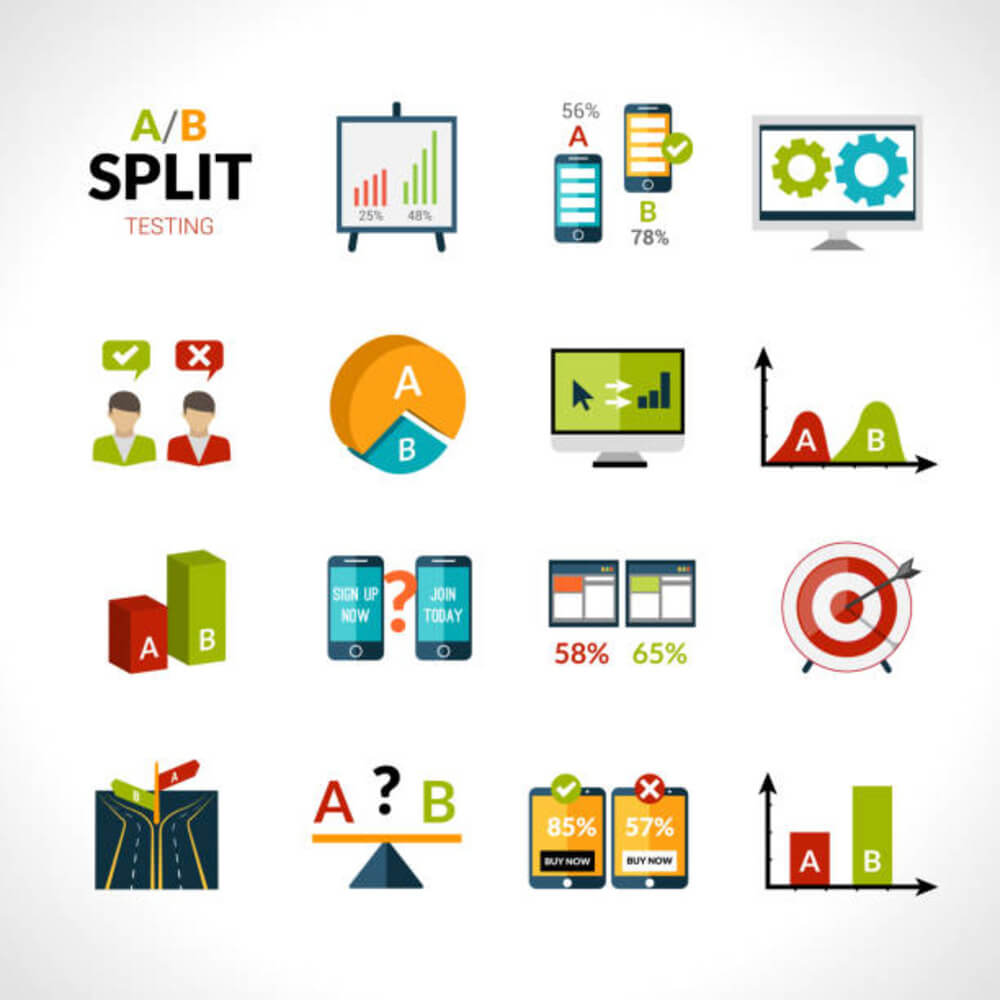
In the ever-expanding digital realm, where websites and online platforms compete for attention, the ability to convert visitors into customers is a skill that can make or break a business. This process, known as Conversion Rate Optimization (CRO), involves fine-tuning your website and marketing strategies to encourage visitors to take a desired action, whether it’s making a purchase, filling out a form, or subscribing to a newsletter. In this blog, we’ll explore the significance of Conversion Rate Optimization, key principles to enhance your conversion rates, and practical tips to turn your online audience into loyal customers.
The Essence of Conversion Rate Optimization
At its core, Conversion Rate Optimization is about making the most of the traffic that lands on your website. It’s not just about increasing the number of visitors but ensuring that a higher percentage of those visitors take the actions you want them to. This might include making a purchase, signing up for a trial, downloading a resource, or any other action that aligns with your business goals.
The Significance of CRO for Businesses
Maximizing Marketing ROI:
Businesses invest time and resources in driving traffic to their websites through various marketing channels. Conversion Rate Optimization ensures that the investment in acquiring visitors translates into tangible returns by increasing the likelihood of conversions.
Enhancing User Experience:
A seamless and user-friendly experience is crucial for retaining visitors and encouraging them to take action. CRO involves optimizing the design, navigation, and content of your website to create a positive and intuitive user experience.
Data-Driven Decision-Making:
CRO relies on data analysis to understand user behavior, preferences, and pain points. By gathering insights through analytics tools, businesses can make informed decisions to improve the customer journey and boost conversion rates.
Competitive Edge:
In a crowded online landscape, businesses that excel at converting visitors into customers gain a competitive edge. A website that effectively guides users through the conversion funnel and addresses their needs stands out in the digital marketplace.
Key Principles of Conversion Rate Optimization
1. Understanding Your Audience:
The foundation of effective CRO is a deep understanding of your target audience. Identify your ideal customers, their preferences, pain points, and motivations. Use tools like surveys, analytics, and customer feedback to gain insights into what drives their decision-making.
2. Clear and Compelling Value Proposition:
Clearly communicate the value your product or service provides. Visitors should quickly understand what sets your offering apart and why they should choose your brand. A compelling value proposition builds trust and encourages users to explore further.
3. Streamlined User Journey:
Streamlining the user journey involves removing unnecessary steps and friction points that may hinder conversions. Analyze the flow from landing on your website to completing the desired action, and ensure it’s a smooth, intuitive process.
4. Effective Call-to-Action (CTA):
Your calls-to-action play a pivotal role in conversion. Design them to be clear, compelling, and strategically placed. Use action-oriented language that prompts users to take the desired steps, whether it’s “Buy Now,” “Sign Up,” or “Get Started.”
5. Trust-Building Elements:
Establishing trust is crucial for conversion. Incorporate trust-building elements such as customer testimonials, reviews, security badges, and guarantees. Transparency about your business, policies, and the security of customer information contributes to a trustworthy online environment.
6. Mobile Optimization:
With the prevalence of mobile browsing, optimizing for mobile users is non-negotiable. Ensure that your website is responsive and provides a seamless experience across various devices. Mobile-friendly design is not just about responsiveness but also about user convenience.
7. A/B Testing:
A/B testing involves comparing two versions of a webpage or a specific element to determine which performs better. Test variations of your headlines, CTA buttons, images, or even entire page layouts. Analyze the results to understand what resonates most with your audience.
8. Personalization:
Tailor your content and offers based on user behavior, preferences, and demographics. Personalization enhances the user experience by delivering relevant information, increasing engagement, and ultimately driving conversions.
9. Optimized Landing Pages:
Landing pages are critical for conversion. Design them with a clear focus on the intended action, minimizing distractions. Ensure that the content aligns with the user’s expectations from the marketing channels that led them to the landing page.
10. Data Analytics and Measurement:
Utilize data analytics tools to track and measure user interactions, conversion rates, and other relevant metrics. Regularly analyze this data to identify patterns, areas for improvement, and opportunities for optimization.
Practical Tips for Conversion Rate Optimization
1. Implement a Multi-Step Checkout Process:
For e-commerce businesses, consider breaking down the checkout process into multiple steps. This can make the process seem more manageable for users and reduce the likelihood of abandonment. Provide progress indicators to keep users informed about the steps ahead.
2. Create Urgency and Scarcity:
Incorporate elements of urgency and scarcity to motivate users to take immediate action. Limited-time offers, countdowns, and alerts about low stock levels can create a sense of urgency, prompting users to make a decision swiftly.
3. Optimize Website Speed:
A slow-loading website can significantly impact user experience and conversion rates. Optimize your website’s speed by compressing images, leveraging browser caching, and minimizing unnecessary code. Tools like Google PageSpeed Insights can help identify areas for improvement.
4. Use High-Quality Visuals:
Visual elements play a crucial role in user engagement. Use high-quality images, videos, and graphics that align with your brand and product. Visual content should not only be aesthetically pleasing but also relevant to the user’s journey.
5. Offer a Seamless Navigation Experience:
Ensure that your website’s navigation is intuitive and user-friendly. Visitors should be able to find the information they need easily. Clear menus, well-organized content, and a logical flow contribute to a positive navigation experience.
6. Segment Your Audience:
Segment your audience based on demographics, behavior, or other relevant factors. By understanding the distinct needs of different segments, you can tailor your messaging and offers to resonate with specific audience segments, increasing the likelihood of conversion.
7. Utilize Exit-Intent Popups:
Exit-intent popups are triggered when a user is about to leave your website. Use these strategically to offer discounts, incentives, or capture email addresses. Exit-intent popups provide a last-minute opportunity to engage users before they exit the site.
8. Simplify Form Fields:
If your conversion involves a form, keep it simple and only ask for essential information. Lengthy forms can be a deterrent, leading to form abandonment. Consider implementing autofill options to streamline the form-filling process.
9. Highlight Social Proof:
Showcase positive reviews, testimonials, and user-generated content to build credibility and trust. Social proof serves as validation for your products or services and can significantly influence the decision-making process.
10. Optimize for Local Search:
If your business has a local presence, ensure that your website is optimized for local search. This includes having a complete Google My Business profile, local keywords in your content, and consistent business information across online directories.
Case Study: Shopify’s Conversion Rate Optimization Journey
Shopify, a leading e-commerce platform, has consistently invested in Conversion Rate Optimization to enhance the user experience and drive more conversions. Here are some key aspects of Shopify’s CRO strategy:
Simplified Onboarding Process:
Shopify redesigned its onboarding process to make it more user-friendly. By simplifying the steps required to set up an online store, Shopify reduced friction for new users, leading to increased sign-ups.
Strategic Use of Free Trials:
Offering a free trial is a common strategy in the SaaS industry, but Shopify took it a step further by extending its free trial period. This allowed users more time to explore the platform, build their online store, and experience its features before committing to a subscription.
Clear Call-to-Action Buttons:
Shopify strategically places clear and compelling call-to-action buttons throughout its platform. Whether it’s encouraging users to start a free trial, choose a pricing plan, or launch their store, the CTAs are strategically positioned for maximum visibility and impact.
Regular A/B Testing:
Shopify consistently conducts A/B testing on various elements of its platform. This includes testing different designs, wording on CTAs, and the placement of key features. By relying on data-driven insights, Shopify continually optimizes its platform for user engagement and conversions.

Educational Content for Users:
Recognizing that many of its users are new to e-commerce, Shopify invests in educational content. The platform provides resources, guides, and tutorials to help users navigate the complexities of online selling. This not only improves user satisfaction but also increases the likelihood of users successfully launching and growing their online stores.
As a result of these efforts, Shopify has become a go-to platform for entrepreneurs and businesses looking to establish an online presence. The company’s commitment to optimizing the user experience has contributed to its sustained growth and success in the highly competitive e-commerce industry.
The Future of Conversion Rate Optimization
As technology continues to evolve and consumer behaviors shift, the future of Conversion Rate Optimization holds several trends and considerations:
Artificial Intelligence (AI) Integration:
AI-powered tools and algorithms will play a more significant role in CRO. Machine learning can analyze user behavior, predict preferences, and automate personalized experiences to enhance conversion rates.
Voice Commerce Optimization:
With the rise of voice-activated devices, businesses will need to optimize for voice searches and commands. Voice commerce optimization will become a crucial aspect of CRO, requiring businesses to adapt their strategies for a hands-free, voice-driven future.
Omnichannel CRO:
As consumers engage with brands across multiple channels, CRO strategies will need to be omnichannel. This involves ensuring a consistent and seamless experience across websites, social media, mobile apps, and physical stores.
Augmented and Virtual Reality Integration:
Augmented reality (AR) and virtual reality (VR) technologies will be leveraged for immersive online shopping experiences. Businesses will need to explore ways to integrate AR and VR to showcase products, simulate real-world use, and enhance the overall customer experience.
Data Privacy and Personalization Balance:
Striking the right balance between personalization and respecting user privacy will be crucial. As data privacy regulations evolve, businesses will need to implement CRO strategies that deliver personalized experiences without compromising user trust.
Conversion Rate Optimization is a dynamic and essential aspect of digital marketing that empowers businesses to make the most of their online presence. By understanding your audience, optimizing user journeys, and staying abreast of emerging trends, you can create a website that not only attracts visitors but converts them into satisfied customers. As technology advances and consumer expectations evolve, the role of CRO will continue to be pivotal in driving business success in the digital age.



